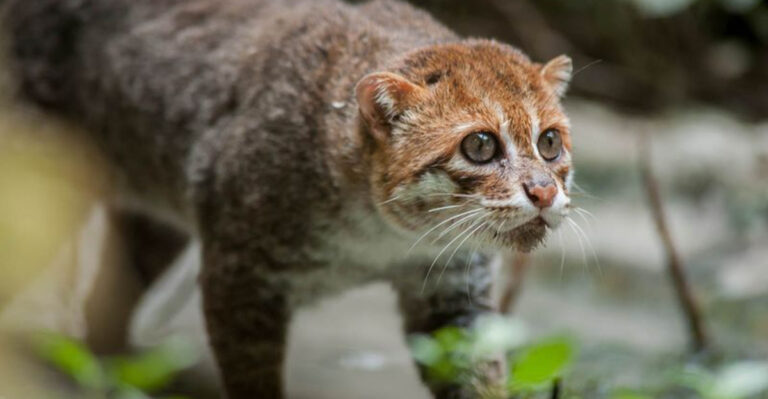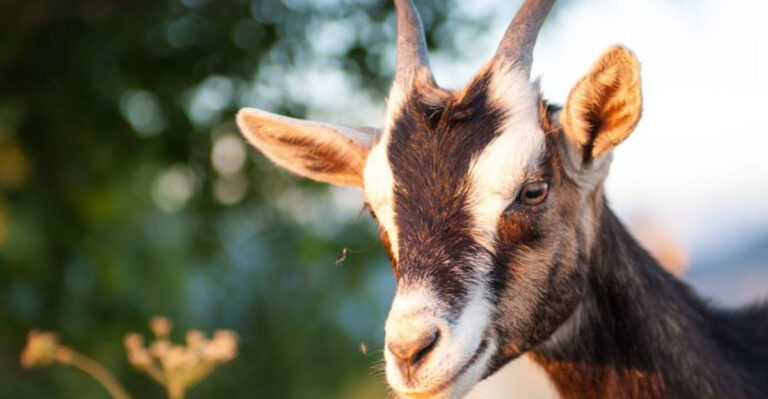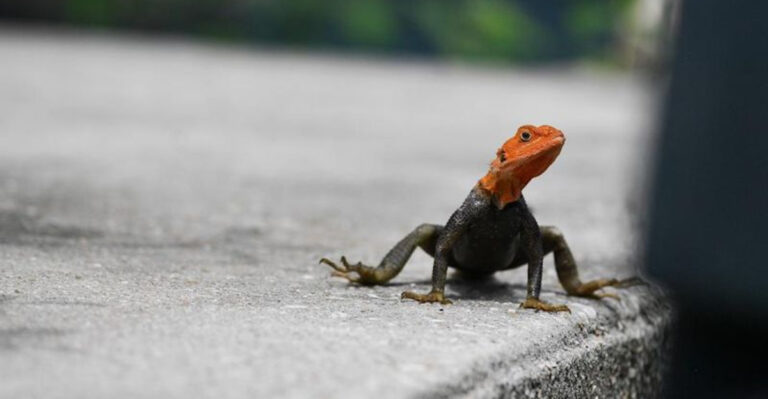17 Reptiles With Stunningly Beautiful Eyes
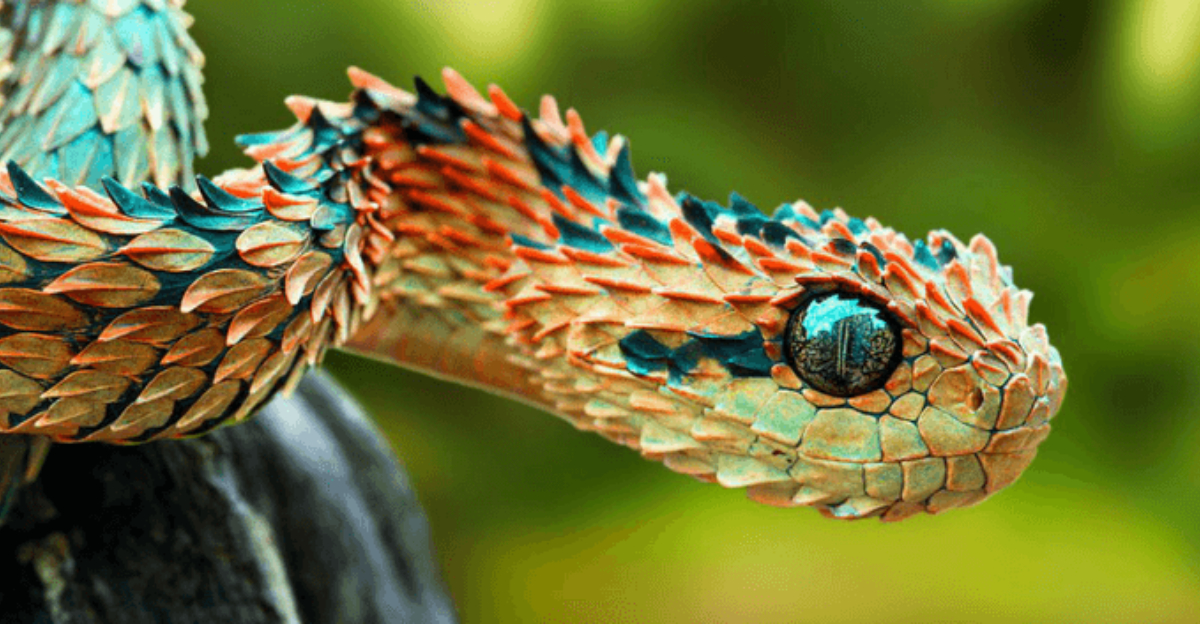
Reptiles have some of the most mesmerizing eyes in nature, featuring colors and shapes so striking they almost seem otherworldly.
From hypnotic pupils to dazzling hues, these eyes aren’t just beautiful—they play vital roles in survival, hunting, and communication. Meet reptiles whose unforgettable eyes will instantly draw you in.
1. Blue-Tongued Skink
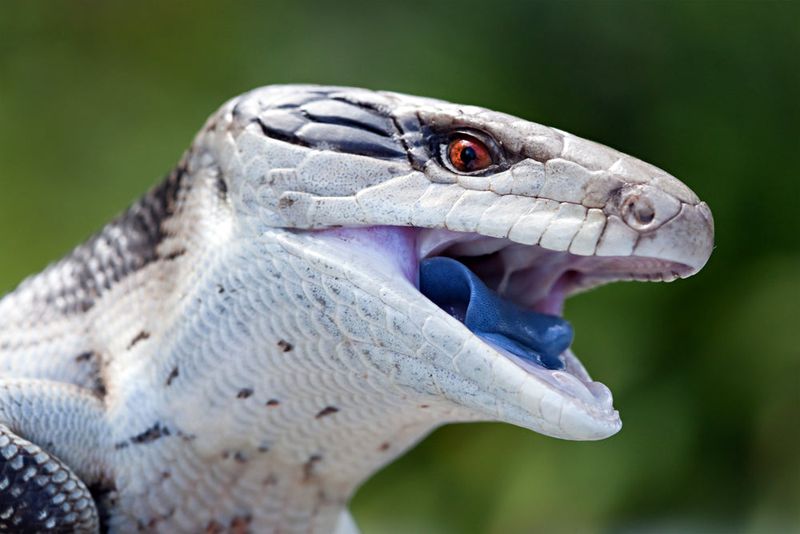
The blue-tongued skink is a marvel with its bright, attentive eyes and distinctive blue tongue. These eyes, alert and expressive, reflect its curious nature.
Inhabiting the grasslands and forests of Australia, this skink relies on its sharp vision to navigate its environment and spot predators.
Its eyes, capable of detecting even the slightest movements, play a crucial role in its survival. With their unique combination of color and expression, the eyes of the blue-tongued skink are truly captivating and add to its charming demeanor.
2. Monitor Lizard
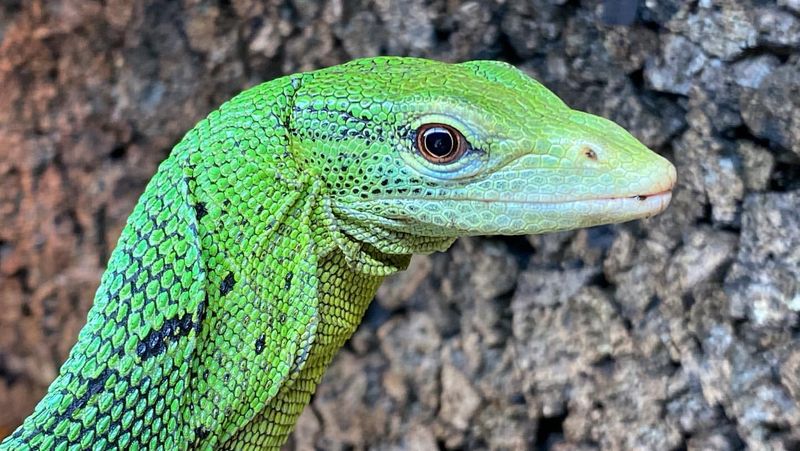
Monitor lizards have some seriously intense eyes that scream “I see everything!”
Sharp, smart, and always alert, their gaze is a big part of what makes them top-tier hunters.
These reptiles can spot the tiniest twitch from far away—no sneaky snacks get past them. And let’s be honest, that bold eye contrast against their rugged scales? Total reptile runway moment.
But it’s not just about the looks—those eyes also help them read the room, whether it’s sizing up danger or throwing a lizard-level side-eye.
3. Chameleon
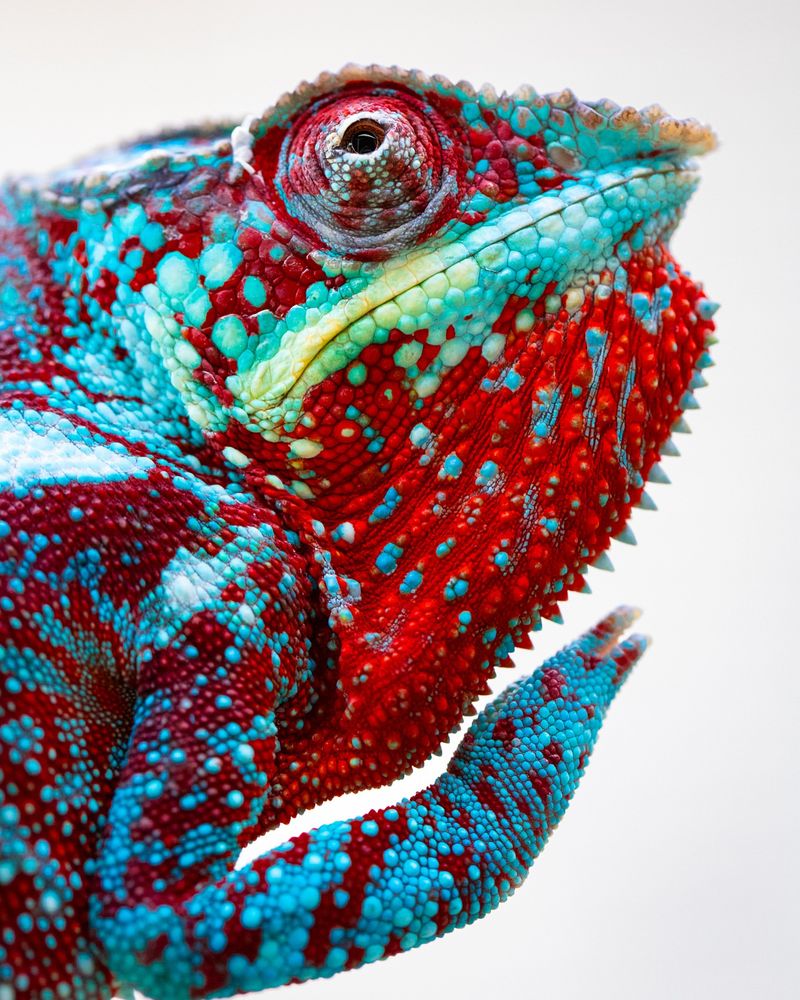
Chameleons have some of the coolest eyes in the animal kingdom—seriously, they’re wild! Each eye moves *on its own*, so they can keep watch in two directions at once.
That means full-on 360-degree vision, perfect for spotting lunch *and* lurking danger without turning their heads.
Even crazier? They can focus on *two* totally different things at the same time. Try doing that during your next Zoom call.
Their peepers also rock stunning colors that shift with their skin, helping them hide or say “hey” to other chameleons.
4. Horned Viper
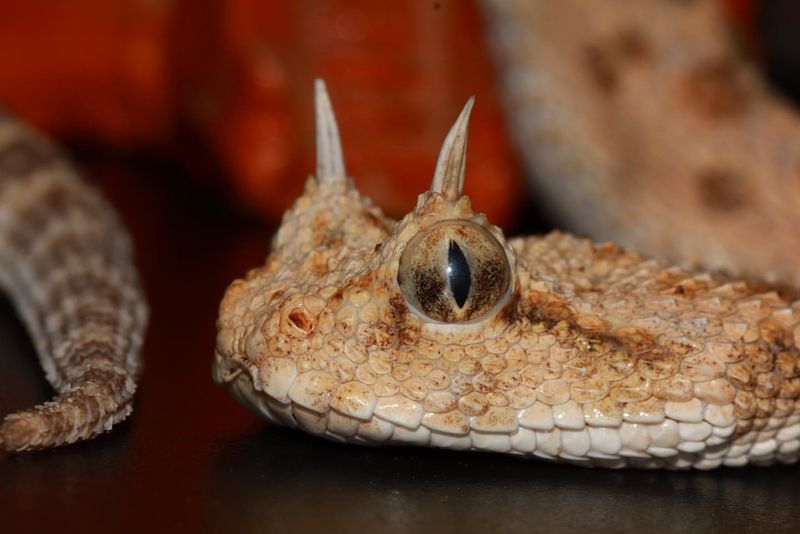
Horned vipers totally live up to their fierce name with those badass horn-like scales right above their eyes. It’s like nature handed them built-in sunglasses with attitude.
Their slitted pupils are perfect for spotting movement in their desert homes—whether it’s bright daylight or pitch-black night, their vision adjusts like a charm.
But those “horns”? They’re not just for show. They make the viper look even more intimidating, sending a clear message: don’t mess with me.
5. Gecko
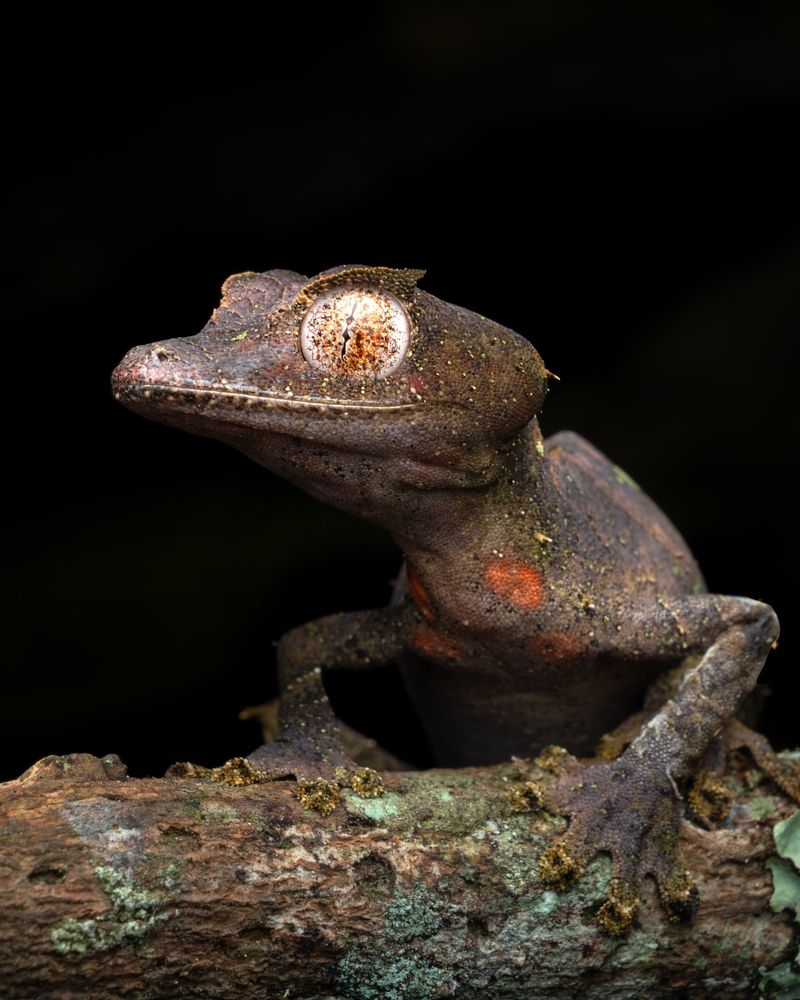
Geckos have some of the most mesmerizing eyes you’ll ever see—they’re like tiny, glowing masterpieces!
No eyelids here—instead, they rock a clear protective membrane to keep things clean and moist.
These night owls can see *in color* even in near-total darkness. Perfect for late-night hunting and secret gecko missions!
Their eyes aren’t just sharp—they’re stunning, often filled with swirls and speckles that look hand-painted.
And get this—they even use eye movements and body language to chat with fellow geckos. So yeah, their eyes are doing *a lot*.
6. Frilled Lizard
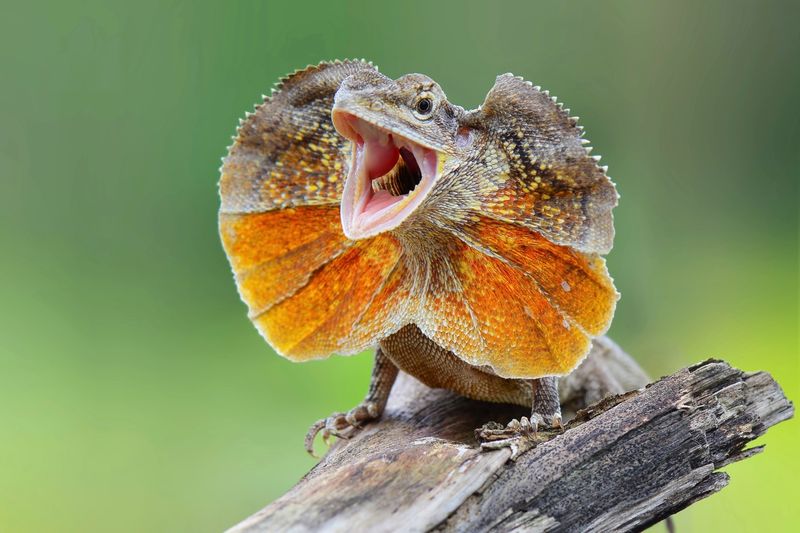
Frilled lizards are known for their eye-catching frills and equally striking eyes. Their keen vision helps them detect both predators and prey in their dry, harsh habitats.
Their eyes are sharp, allowing them to spot insects and small creatures with precision. This visual acuity, paired with their dramatic frill, makes them both fierce and fascinating.
When threatened, the combination of their intense gaze and expanding frill makes for an awe-inspiring defense display. ž
7. Alligator
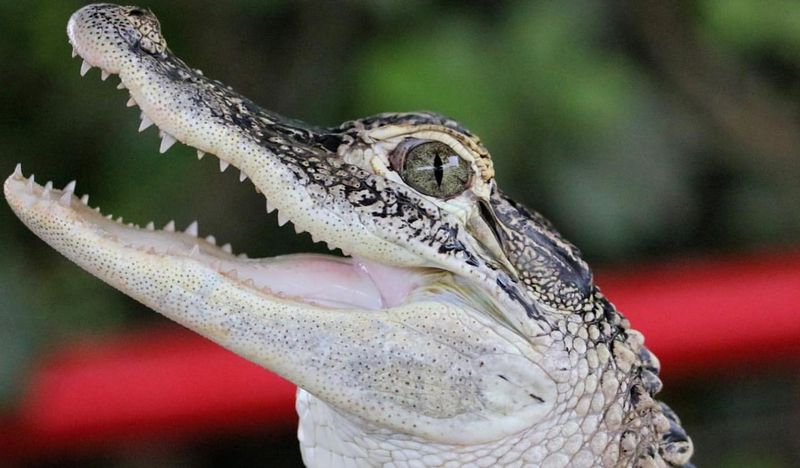
Alligator eyes are the ultimate stealth tool—perched right on top of their heads like little periscopes!
That way, they can spy above the water while staying almost totally hidden below.
They also have built-in night vision goggles thanks to a cool layer called the tapetum lucidum. It makes their eyes glow in the dark and helps them hunt like pros after sunset.
When they dive underwater, a special see-through eyelid (fancy name: nictitating membrane) slides over like sleek swimming goggles.
8. Crested Gecko
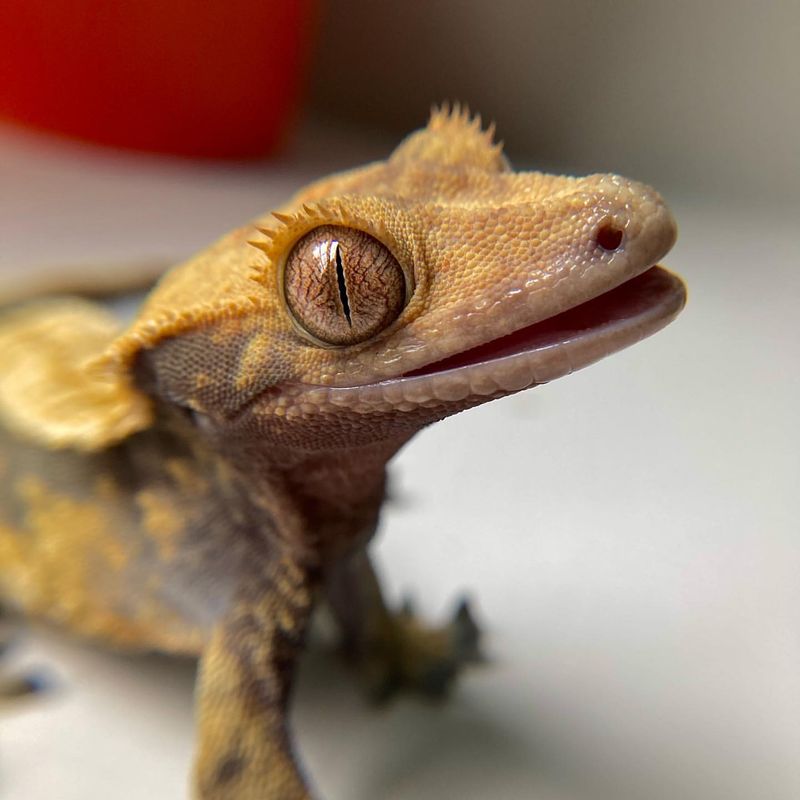
Crested geckos have some of the most expressive eyes in the reptile kingdom.
These small, nocturnal lizards boast large eyes relative to their body size, providing excellent night vision.
Their eyes lack eyelids and are protected by a clear membrane, which they clean using their tongues. This unique feature is fascinating to observe and essential for their health.
The eyes of a crested gecko often have intricate patterns and colors, adding to their charm.
9. Gaboon Viper
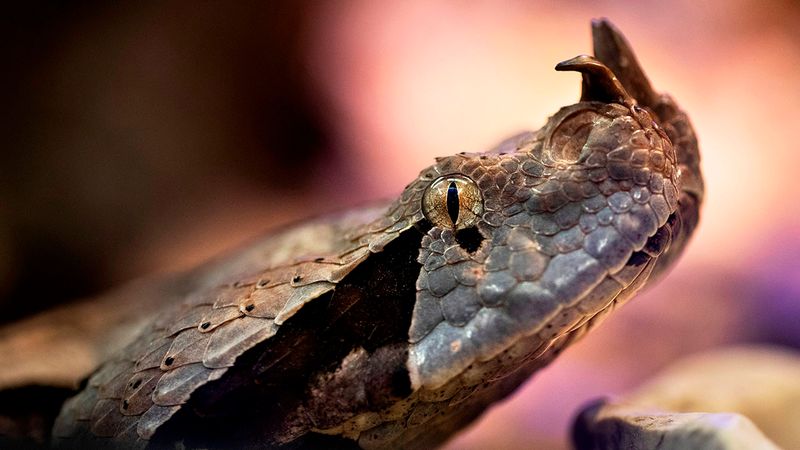
The Gaboon viper’s eyes are absolutely mesmerizing—and just a little bit terrifying.
With those vertical, cat-like pupils and intense stare, they look like something straight out of a fantasy novel.
These eyes aren’t just for show—they help the viper strike with pinpoint accuracy, even when hiding out in thick brush. Think of them as stealth mode with laser focus.
To top it off, their eye color often mirrors their surroundings, making them practically invisible until it’s too late. Beauty, danger, and camouflage all in one fierce package.
10. Anole Lizard
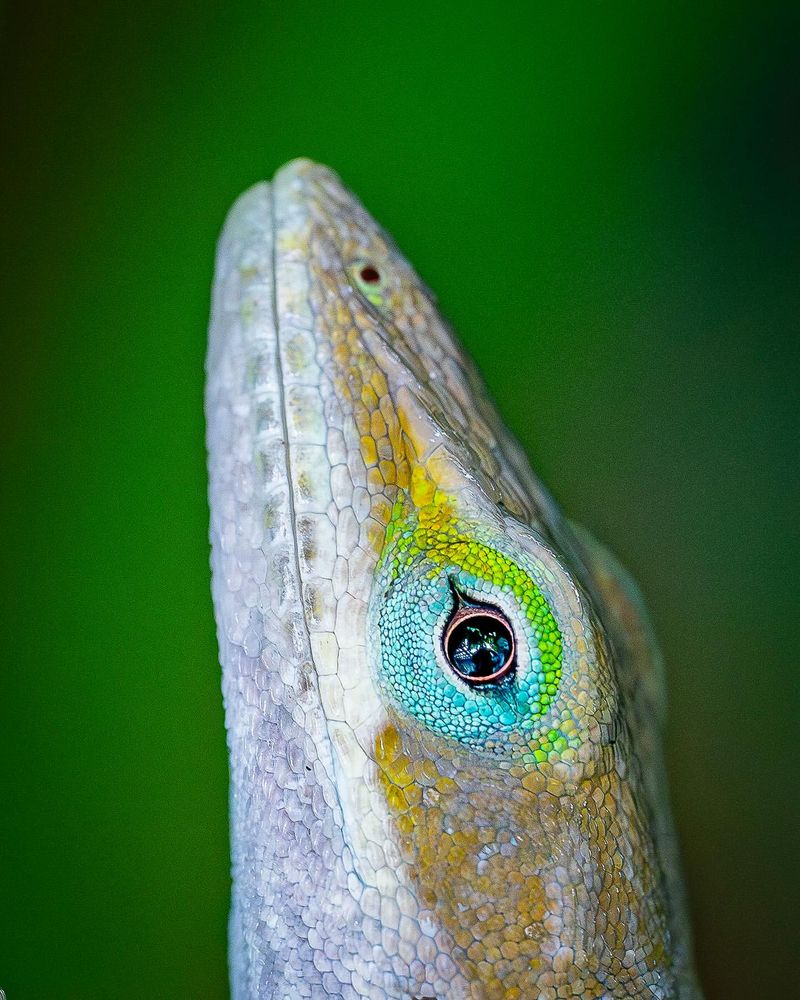
Anole lizards have the kind of eyes that make you do a double take—bright, green, and totally in sync with their leafy surroundings. It’s like nature gave them a built-in pair of sunglasses and a perfect fashion sense.
These tiny guys don’t miss a beat—they can lock onto a snack-sized insect from across the branch.
Their expressive eyes aren’t just for show either; they’re part of the lizard flirting game and help in showing off during territorial face-offs.
11. Caiman
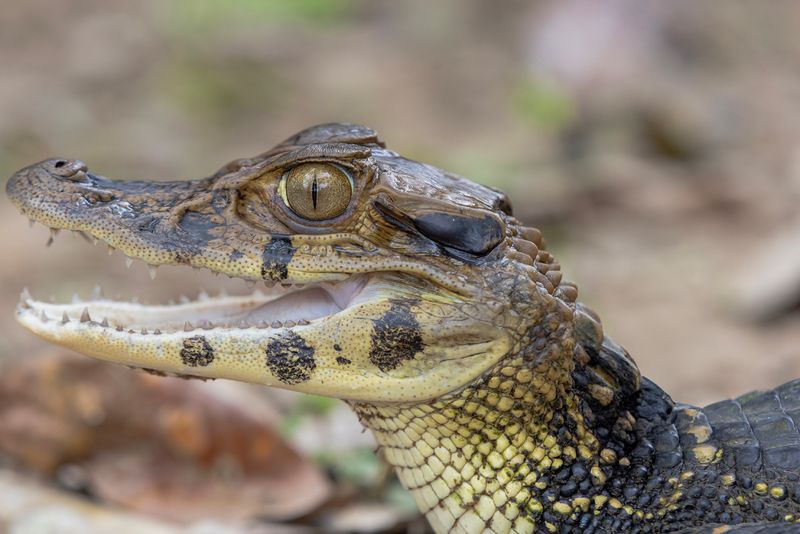
Caimans rock some seriously cool peepers that scream “stealth mode.”
Their eyes sit right on top of their heads, letting them spy on the world while staying mostly underwater—like tiny, scaly submarines.
They’ve got night vision magic too, thanks to a tapetum lucidum that gives their eyes that eerie nighttime glow. Perfect for hunting in the dark, no flashlight required..
12. Burmese Python
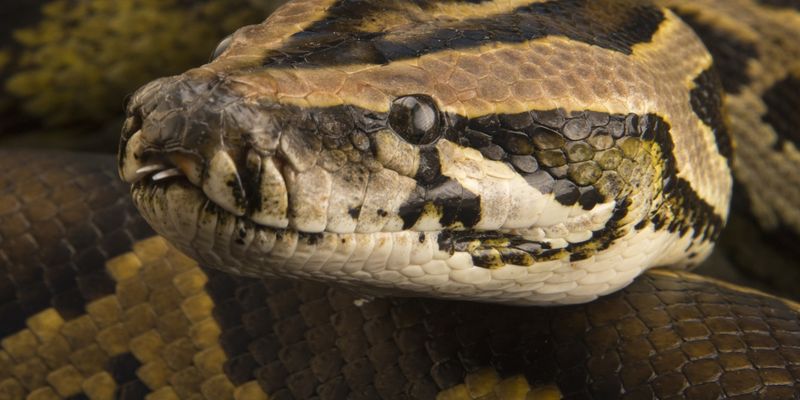
The Burmese python’s eyes are pure gold—literally and figuratively. They shimmer with a golden glow that makes them look like jungle royalty, especially under low light.
These slithery giants are night hunters, and their eyes are built for it. Wide pupils soak in every bit of moonlight, helping them spot unsuspecting prey in total darkness.
Their gaze is slow, steady, and totally mesmerizing—like they know they’re the boss of the underbrush.
13. Jackson’s Chameleon
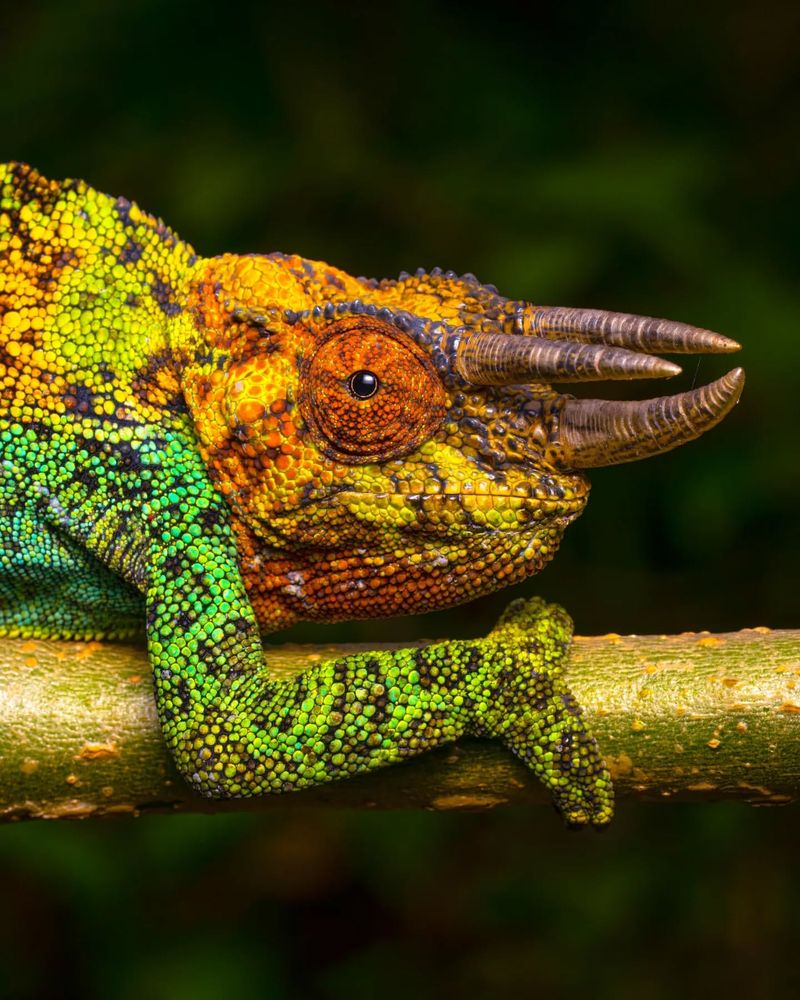
Jackson’s chameleons have some of the most mesmerizing eyes in the reptile world—shifting shades of blue, green, or yellow depending on their mood or surroundings. It’s like their emotions are on full display, right in their eyeballs.
Each eye can move independently, giving them a full panoramic view without even turning their heads—spy mode: activated.
This superpower helps them lock onto prey and watch for predators at the same time.
14. Pit Viper
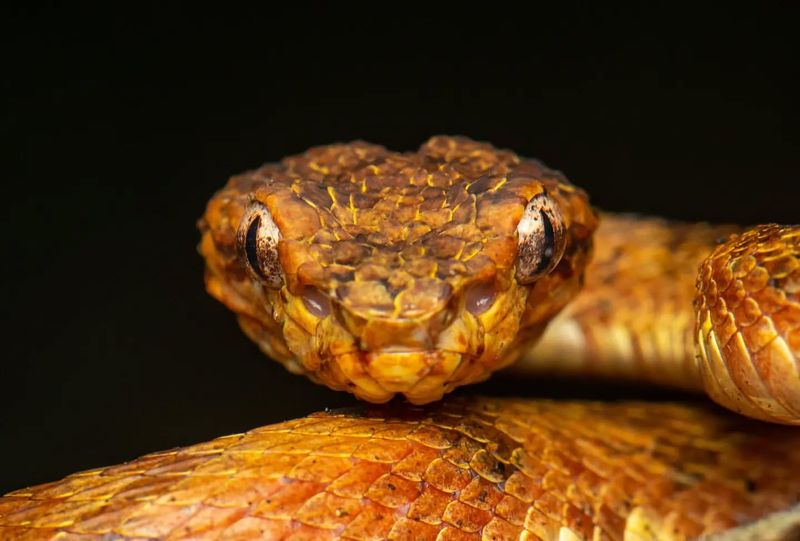
Pit vipers are like nature’s night-vision ninjas—with built-in heat sensors right between their eyes and nostrils.
These pits let them track warm-blooded prey even when it’s pitch black. Sneaky, right?
Their eyes, with those intense vertical slit pupils, aren’t just for looks—they adjust to light like high-tech lenses. So whether it’s bright daylight or moonlit shadows, they see it all.
15. Komodo Dragon
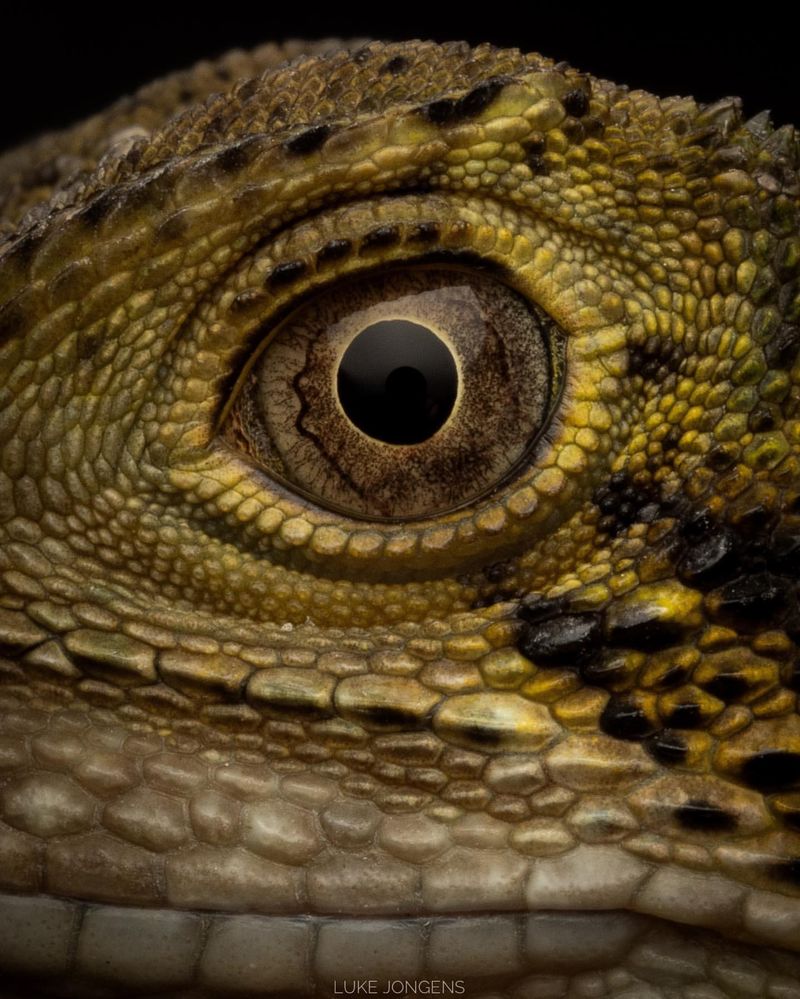
Komodo dragons are the kings of lizards, and their eyes are just as fierce as their size.
With sharp vision, they can spot prey from afar, making them powerful hunters in their rugged island homes.
Their amber eyes are intense, capturing attention the moment they lock on to something. This sharp focus helps them survive and thrive in harsh environments.
16. Iguana
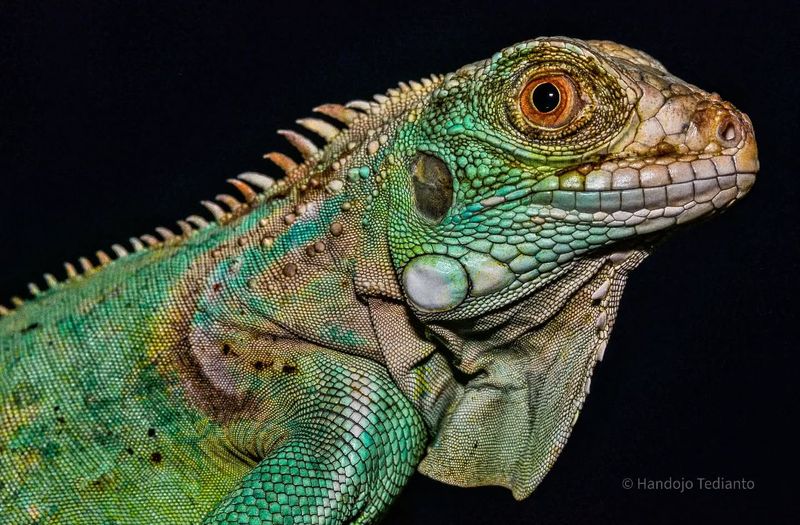
Iguanas totally win the eye game with those bright, expressive peepers that match their bold personalities!
Their vision is top-notch—perfect for spotting snacks or sneaky predators from a distance.
They’re movement-detecting champs, always alert and ready to dash if something seems off. But the real twist? They have a secret third eye on top of their heads—yep, for real.
It’s called a parietal eye, and while it doesn’t see like a regular eye, it senses light and motion like a built-in alarm system.
17. Bush Viper
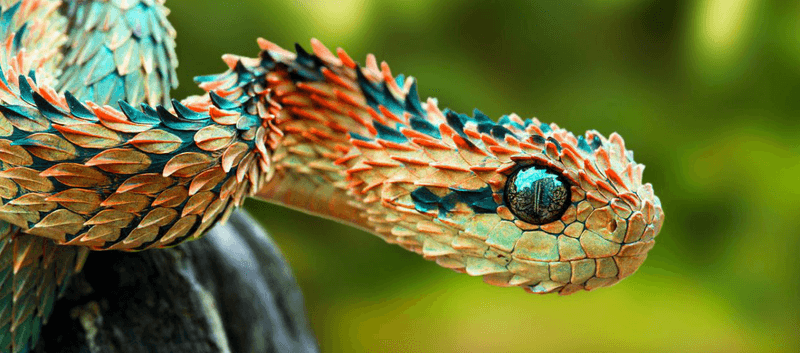
The bush viper, with its vivid coloration, is a sight to behold. Its eyes, intense and watchful, seem almost otherworldly against its colorful scales.
This snake, often found in the lush rainforests of Africa, uses its keen vision to hunt small prey. Its elliptical pupils adjust in size to allow for optimal light intake, making it a master of both day and night.
Whether basking in the sun or slithering through shadows, the bush viper’s eyes remain one of its most striking features, contributing to its aura of mystery and allure.


